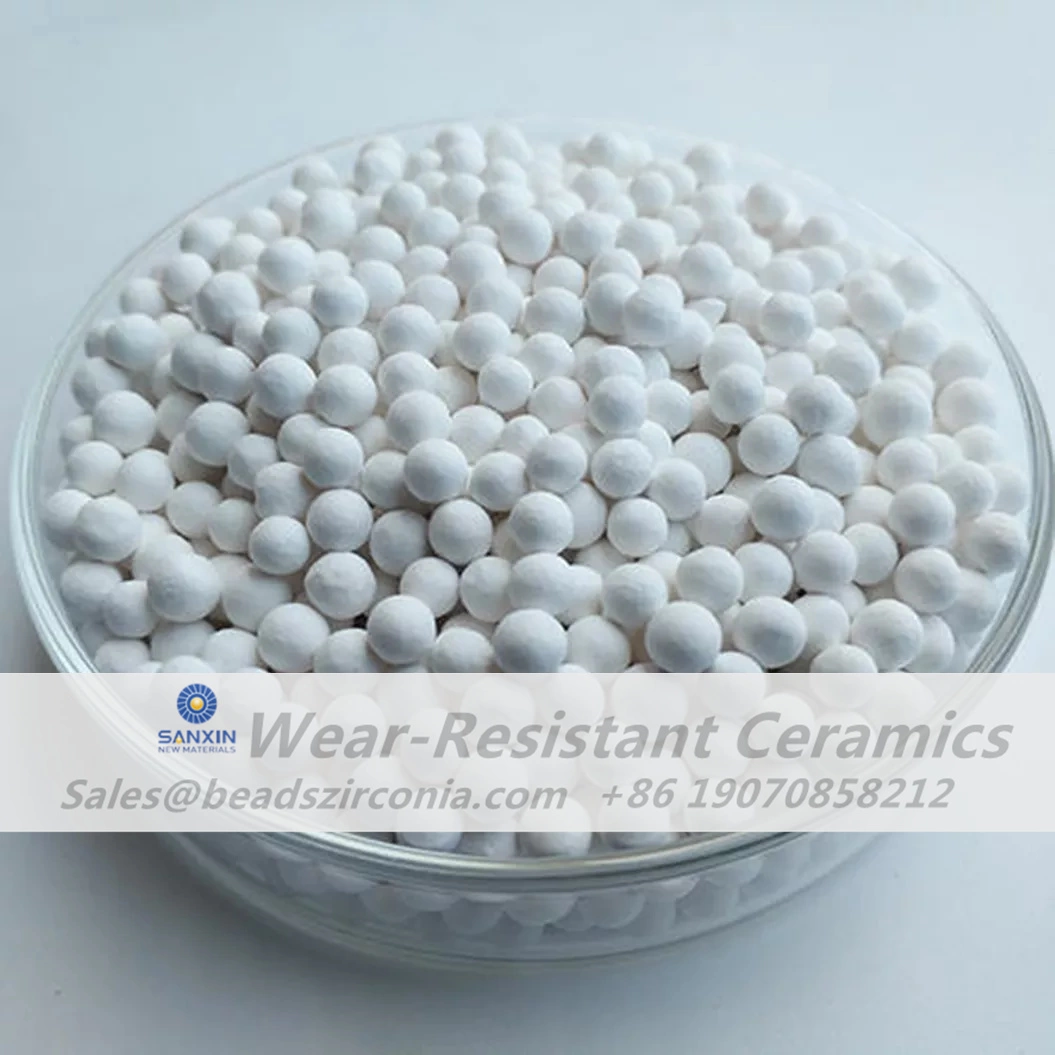Ceramic alumina balls are widely used in milling and grinding processes in various industries due to their superior properties. One crucial aspect of their performance is their impact on energy consumption during these processes. In this comprehensive article, we will delve into how ceramic alumina balls affect energy consumption, why it matters, and how industries can optimize their milling and grinding operations for maximum efficiency. Let's explore the fascinating world of ceramic alumina balls and their energy-saving potential.

Ceramic alumina balls influence energy consumption in milling and grinding processes in several ways. Let's delve into the key factors that highlight their impact:
Ceramic alumina balls exhibit exceptional wear resistance and low friction characteristics. As a result, they experience minimal wear during the milling and grinding processes. Reduced wear translates to less energy dissipation, making ceramic alumina balls an energy-efficient choice for these applications.
Due to their high density and hardness, ceramic alumina balls efficiently grind and disperse materials. This enhanced grinding efficiency means that less energy is required to achieve the desired particle size, resulting in energy savings and lower operating costs.
During milling and grinding, heat is generated due to friction. Ceramic alumina balls have excellent heat dissipation properties, which helps maintain lower operating temperatures. This reduces the energy expended on cooling systems, leading to overall energy savings.
Ceramic alumina balls' uniform shape and size contribute to reduced ball-to-ball collision energy during the milling and grinding processes. This reduction in collision energy leads to decreased overall energy consumption.
The high mechanical strength of ceramic alumina balls results in a lower ball breakage rate during the processes. Fewer broken balls mean less energy is required for ball replacement, further contributing to energy efficiency.
Let's summarize the key topics covered in this article:
| Heading | Sub-Heading |
Introduction | |
How do ceramic alumina balls affect energy consumption in milling and grinding processes? | Friction and Wear Reduction |
Improved Grinding Efficiency | Enhanced Heat Dissipation |
Reduced Ball-to-Ball Collision Energy | Lower Ball Breakage Rate |
Ceramic alumina balls' high wear resistance and low friction properties lead to reduced wear during milling and grinding, resulting in less energy dissipation.
The high density and hardness of ceramic alumina balls enable efficient grinding, requiring less energy to achieve the desired particle size.
Ceramic alumina balls' excellent heat dissipation properties help maintain lower operating temperatures, reducing the energy consumed by cooling systems.
The uniform shape and size of ceramic alumina balls contribute to reduced collision energy, leading to decreased overall energy consumption.
Ceramic alumina balls' high mechanical strength results in fewer broken balls, reducing the energy required for ball replacement.
Q: How do ceramic alumina balls compare to other grinding media in terms of energy consumption?
Ceramic alumina balls generally exhibit lower energy consumption compared to other grinding media due to their wear resistance and efficient grinding capabilities.
Q: Can using ceramic alumina balls lead to significant energy cost savings?
Yes, utilizing ceramic alumina balls can result in notable energy cost savings, especially in large-scale milling and grinding operations.
Q: Do ceramic alumina balls require specific operating conditions to achieve energy efficiency?
Using ceramic alumina balls efficiently requires optimizing the milling or grinding process parameters to suit the specific application and material properties.
Q: Are there any disadvantages to using ceramic alumina balls in terms of energy consumption?
Ceramic alumina balls are generally advantageous in terms of energy consumption; however, their initial cost may be higher than traditional grinding media.
Q: Can I use ceramic alumina balls in high-temperature milling and grinding processes without affecting energy consumption?
Yes, ceramic alumina balls' excellent heat dissipation properties make them suitable for high-temperature processes without significantly impacting energy consumption.
Q: Are there any specific industry applications where ceramic alumina balls excel in energy efficiency?
Ceramic alumina balls are widely used in industries such as ceramics, mining, and paint manufacturing, where energy efficiency is a critical consideration.
Ceramic alumina balls play a pivotal role in reducing energy consumption during milling and grinding processes. Their superior wear resistance, efficient grinding capabilities, and excellent heat dissipation properties contribute to overall energy savings. Industries seeking to optimize their operations and reduce energy costs can benefit significantly from using ceramic alumina balls. Embracing these high-performance grinding media can lead to improved efficiency, reduced wear, and enhanced productivity while positively impacting the bottom line.

Submit your demand,
we will contact you ASAP.

Sanxin New Materials Co., Ltd. focus on producing and selling ceramic beads and parts such as grinding media, blasting beads, bearing ball, structure part, ceramic wear-resistant liners, Nanoparticles Nano Powder

